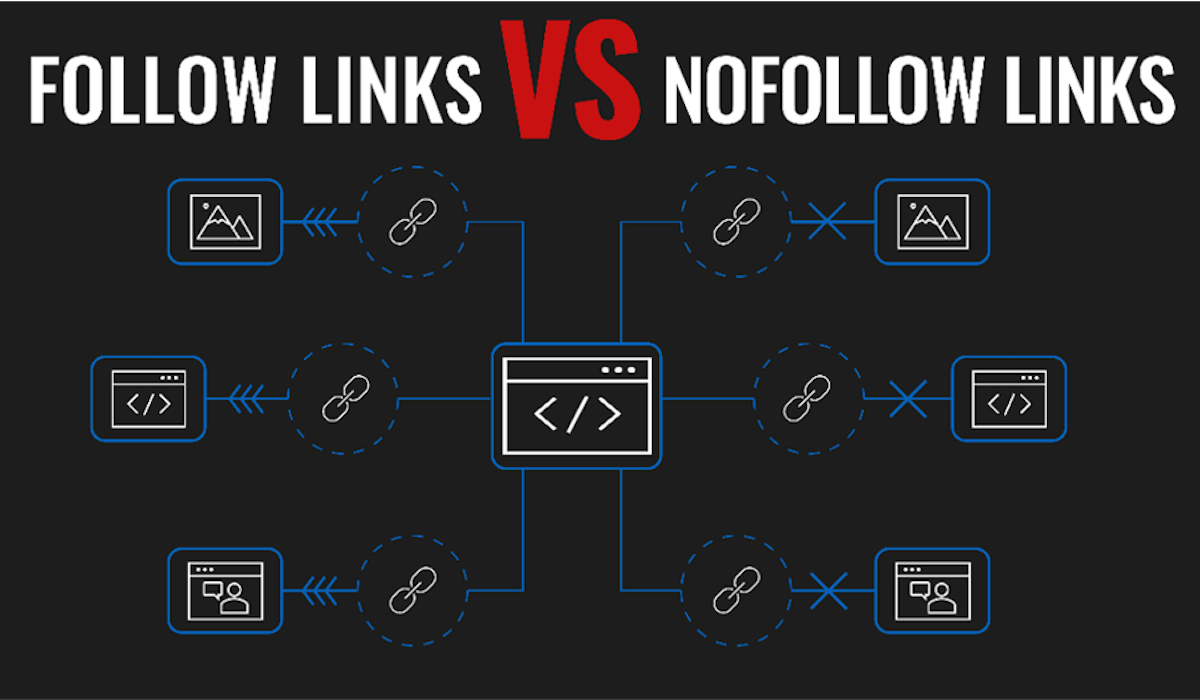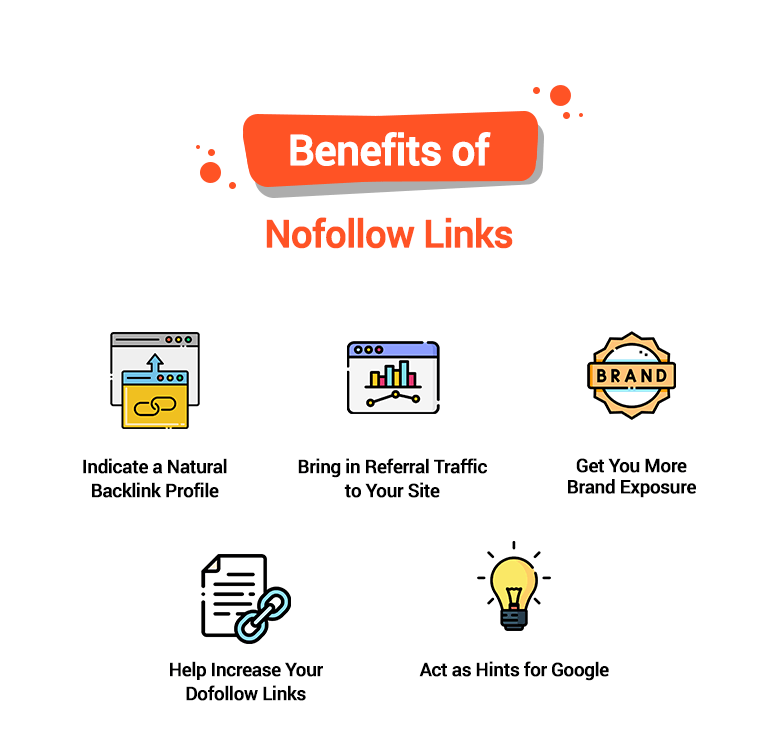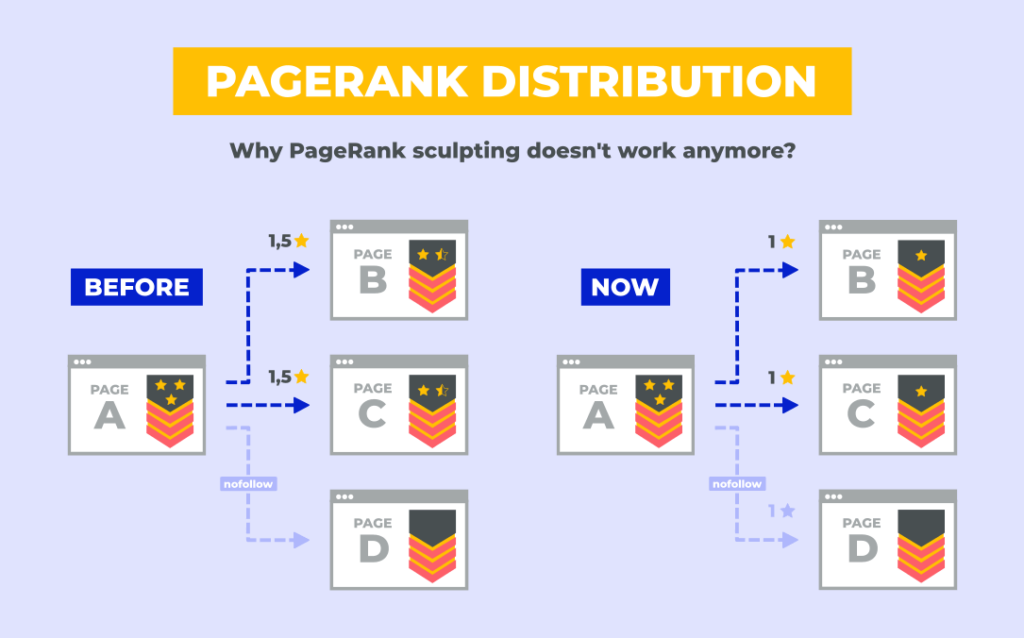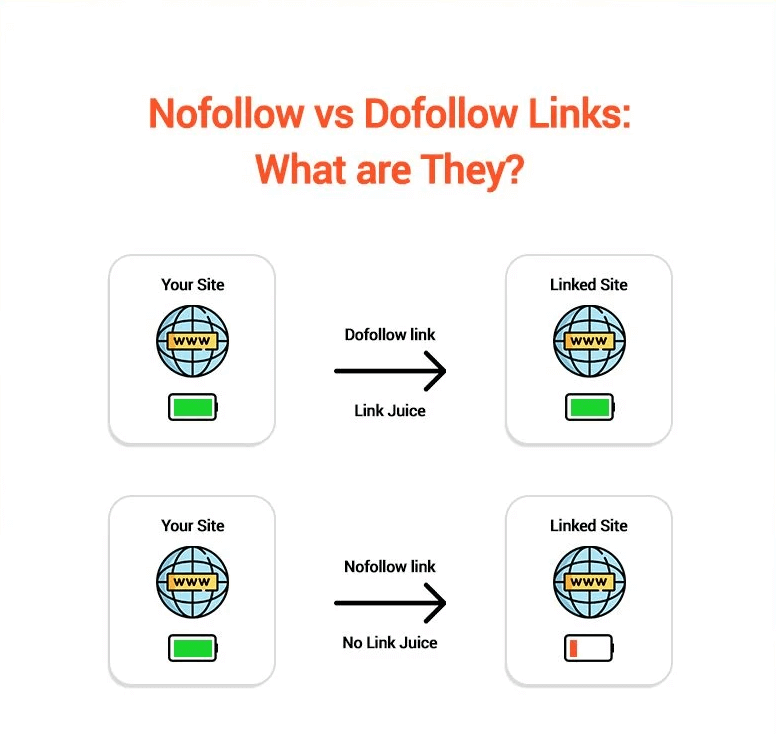
Creating a successful backlink strategy remains one of the more challenging aspects of Search Engine Optimization (SEO). A backlink is a link one website receives from another. If another entity links to your website, that strengthens brand awareness and increases referral traffic to your website. Backlinks also benefit your site’s SEO performance. Many times, websites accrue backlinks naturally, though SEO marketers sometimes work to create and maintain them as part of their SEO strategies.
Backlinks are crucial for SEO because Google views backlinks as recommendations. Thus, the more backlinks a page has, the more trustworthy Google deems it. This especially applies when the backlinks come from reputable sources. Links on your website that link to other URLs are also part of this mix. Some of your links should be nofollow, such as affiliate links or links posted by users to sites you don’t want to endorse (more on this later).
Google introduced the concept of dofollow and nofollow links back in 2005, tying credible backlinks to SEO page rankings. In this article, we will define dofollow and nofollow backlinks, explain the difference between the two, and point out the importance of both. Finally, we’ll discuss best practices for building both types of links into your content, pages, and overall backlink profile.
Nofollow Backlinks
So, what are nofollow backlinks? Nofollow links are hyperlinks that have the rel=”nofollow” attribute in the HTML code. Google introduced the nofollow attribute in 2005 to fight comment spam. With it, web admins have the option to devalue certain links. The “nofollow” value informs Google not to crawl the linked page or attempt to test the link equity or ranking strength of it.
For example, a nofollow link might look like this in the HTML code:
<a href=”https://example.com/” rel=”nofollow”>Click to learn more</a>
Here, the rel=”nofollow” attribute identifies it as a nofollow link.
Are Nofollow Links Useful?
Because you are waving Google away from crawling a particular backlink, it calls the link’s value into question. Why include it on your site if you don’t want Google to crawl it? While nofollow links don’t bolster your SEO like dofollow links, they have value. In fact, they play a pivotal role in SEO.
Nofollow links work behind the scenes. They aid in making your link profile diverse and straightforward. When there is a natural mix of links, search engines view your site as above board, one that uses ethical and intelligent SEO strategies.
In contrast, a website with only dofollow links seems unnatural or unethical to search engines, which can trigger red flags and lead to penalties. By having a good balance of nofollow links mixed in, your website demonstrates better SEO and is primed with a solid organic growth pattern.
In this way, they strengthen SEO and drive organic traffic to your website. A nofollow link (or a link from another website pointing to your own) builds brand awareness. It could lead to a wave of visitors to your site, generating conversations, interactions, and conversions.

When to Use a Nofollow Link
It can be challenging to decide when and where to use nofollow backlinks. You want to place them on your own website when referencing something, though you’re not formally endorsing the site or giving it your stamp of approval. For instance, you may want to give your audience some links so they can do their own research on a topic. In this case, you would use the rel=”nofollow”.
Nofollow links also do their magic with user-generated content through comments and discussion forum posts. Any time a visitor inserts a link on your website, it should be automatically nofollowed. The attribute to use in this case is rel=”ugc”. While you can’t vet every link for reliability, you won’t encounter any search engine issues.
If you have sponsored or affiliate links on your website, the ethical thing to do is to make them nofollow links. In this case, rel=”nofollow” will work, though the best practice here is to assign rel=”sponsored” to them or combine attributes and add rel=”sponsored nofollow”.
Ultimately, it’s a matter of striking a chord between endorsing with deliberation and sharing with discretion. The combination of dofollow and nofollow backlinks balances your SEO, elevates your backlink profile, and enhances your website’s credibility.
Dofollow Backlinks
Dofollow backlinks are also known as “follow” links, and they are the standard hyperlinks on the web. They don’t have any unique attributes attached to the HTML code like ugc, nofollow, or sponsored.
As an example, the HTML code for a dofollow link looks like this:
<a href=”https://example.com/”>Click to learn more</a>
Because there is no “rel” attribute affixed, it is a follow link.
When to Use a Dofollow Link
Use a dofollow link any time you want to vouch for the value or credibility of the linked page. When you link to a reliable, quality source, you tell your audience you trust the content. Further, that linked content often complements or even enhances your own content.
As an example, say you’re writing a blog article on select SEO strategies and want to reference a recently published article. In this case, a dofollow link is appropriate. Your readers and Google should be able to visit the link and have it connected to your site. This builds community, trust with your readers, and SEO credibility.
The Difference Between Nofollow and Dofollow Backlinks
The main difference between nofollow and dofollow links is how they influence the search rankings of the linked page. PageRank signals are algorithm points that tell Google the page being linked to is valuable or contains valuable information.
Dofollow links boost the ranking of the page they link to, while nofollow links do not. For instance, if you are writing a post about window treatments and you post a link to Home Depot’s website with the following HTML tag:
<a href=”https://www.homedepot.com//”>Home Depot</a>
This is a dofollow link that can influence Home Depot’s search engine rankings. However, if we add the rel=”nofollow” attribute to that, the link won’t pass any ranking power to Home Depot’s site. This attribute notifies search crawlers that the link shouldn’t affect the PageRank score.
This doesn’t affect how users interact with the link, only how the algorithm responds to it.
Only a dofollow link passes PageRank signals, which is sometimes called “link juice.” For this reason, dofollow links have more substantial SEO power than nofollow ones.

How Nofollow and Dofollow Backlinks Impact SEO
As stated, the two types of links impact PageRank differently. A website’s PageRank is essentially its value as Google interprets it. Pages with strong PageRank appear higher on Search Engine Results Pages (SERPs). While dozens of factors contribute to a page’s ranking, links are considered a core indicator of worthy information.
Thus, when a highly ranked website has a dofollow link to a lower ranked site, it sends the linked site some of its value, or “link juice.” This boosts the value of the lower-ranked website. The search engine assigns more PageRank points to it because of that high-quality dofollow link.
In contrast, nofollow links do not pass any link juice (or link equity). If another site includes a nofollow link to your page, your site doesn’t gain any authority, meaning it won’t transfer any PageRank from the other site or improve your rankings. As stated earlier in this article, a nofollow link may inspire more visitors to your website and bolster your site traffic, so there is some value there, though it doesn’t equate to PageRank per Google.

How to Check Nofollow and Dofollow Links
If you’d like to review your pages for dofollow and nofollow backlinks, there are some easy ways to check. The simplest way to check a single link is to right-click it and select “Inspect” or “Inspect Element.” That opens the elements panel of your browser. If you see the rel=”nofollow” tag, the link is a nofollow. If there’s no attribute, then it’s a dofollow link.

Checking Outbound Links
Browser extensions help you to detect and view dofollow or nofollow backlinks. Mangools SEO extension has an On-page SEO tab that enables you to select outbound links to view both dofollow and nofollow links on the page.
If you need a more automated process to check your whole site, there are tools at your disposal. One such tool, Ubersuggest, enables you to review and categorize links quickly. Any of these tools do more than just sort links. You can use them to gain insight into your SEO strategy. They give you a better understanding of how backlinks work, allowing you to fine-tune your SEO strategy.
Checking Inbound Links
Should you need to analyze the inbound links, you can use a backlink analysis tool like LinkMiner. You enter the URL, and the tool shows you the backlinks on that domain or page. You can apply a filter to show only dofollow or nofollow backlinks.
How to Build Dofollow and Nofollow Links
Part of every good SEO strategy is to build high-quality dofollow links. One of the easiest ways to do that is to search for positive mentions of your brand on other websites that have not yet linked to your site. You can reach out to the company and ask if they’d be willing to add a dofollow backlink to your site.
A second way to do a more complex search is to use an SEO tool like Ahrefs. Search results can yield content on competitor sites that’s similar to yours. You may be able to reach out to the linking website owner and ask them to switch their link (whether it be dofollow or nofollow) to your site instead. Or, you may find some good listicle articles and have your brand added where the article mentions competitors.
While these methods don’t yield a high return, they may help build your backlink profile enough to improve your PageRank. There isn’t really a quick way to build quality links, especially because backlinks should be earned rather than acquired. The best method remains to create content that is compelling enough to prompt people to link to it naturally.
How to Use Dofollow and Nofollow Backlinks Together
By now, you understand that an efficient SEO strategy involves a balanced mix of dofollow and nofollow backlinks to trigger a positive response from Google. Here are some best practices for enhancing your backlink profile.
Understand the Differences
Dofollow links are the strongest, delivering the linking site’s link juice back to the linked site (yours), thus increasing your site’s authority. Nofollow links on your website are significant because they diversify your website and protect you from potential penalties.
Ensure Your Profile is Diverse
A naturally diverse link profile is ideal by SEO standards. Mixing dofollow and nofollow links on your website allows you to present authenticity and avoid any Google penalties. Your goal is to create a varied collection of links that organically elevate your site’s SEO standing.
Harness the Traffic Potential
Nofollow links from reputable sites are traffic magnets. Appreciate their value despite the fact that they don’t provide much in terms of link juice. What they do provide are valuable opportunities to drive traffic to your site and encourage user engagement and conversion, which is what turns visitors into followers.
Integrate Backlinks with Content Strategy
On your website, be sure to blend dofollow and nofollow links within high-quality content. A well-placed link only works if it’s placed within compelling content. The mix will enhance user experience and maximize SEO impact.
Monitor and Adjust as You Go
Use analytics tools to monitor the link performance continually. Take the time to assess their effectiveness and adjust your strategy as needed based on insights. You’ll need to refine your approach constantly as SEO best practices adapt to the ever-evolving algorithms.
Maintain Balance
Overall, the goal is to maintain a good balance of dofollow and nofollow backlinks. Too many dofollow links may seem contrived and manipulative, while too many nofollow links may hinder the growth of your backlink profile. Your goal is for an organic, balanced integration of both link types. Google’s introduction of the nofollow attribute gives you control over dofollow/nofollow backlinks and also adds to your SEO maintenance processes. However, the result is a holistic SEO strategy you can adapt and strengthen over time, where your backlinks work together in symbiosis to drive your SEO. After all, it’s not about choosing one type of link over the other. Instead, it’s about understanding the value of both and how they work together to fortify your SEO strategy.